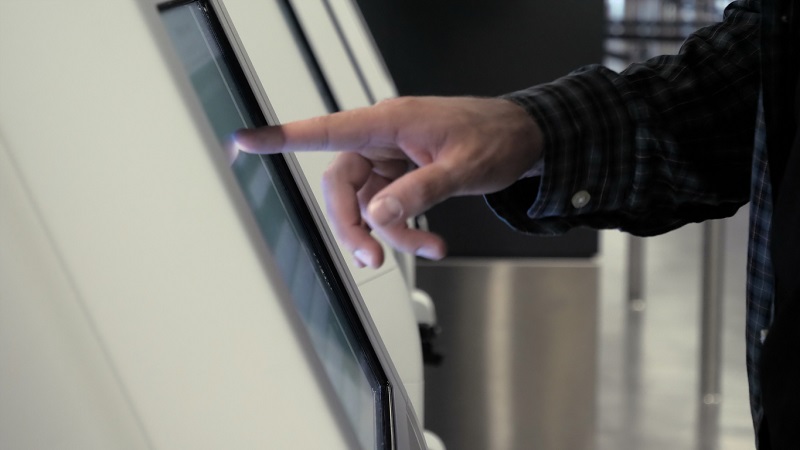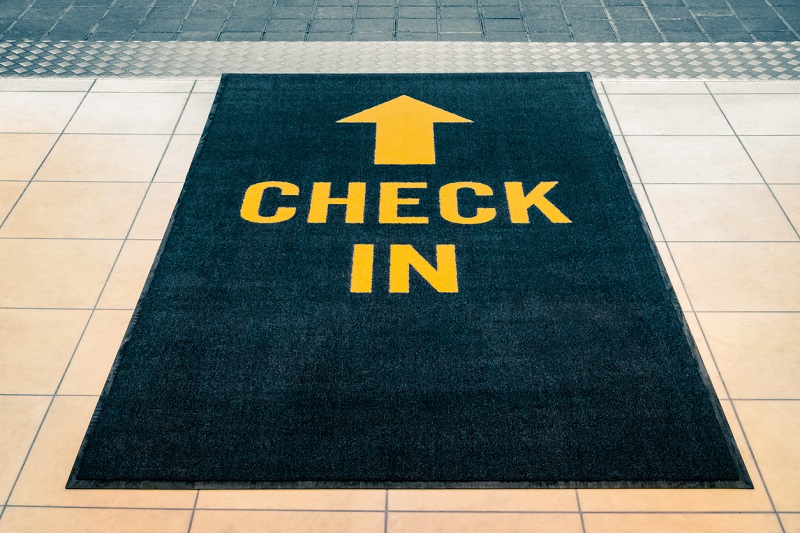No one enjoys waiting in line at medical offices or hospitals, but because many facilities are experiencing issues with understaffing, it has become even more common for individuals to endure longer wait times. In order to help streamline processes like patient check-in, many medical providers and hospital systems have turned to digital automation in order to improve the patient experience as well as take some of the pressure off their staff members. Today, we will discuss why so many medical offices are adopting self-service kiosk technologies and why they are so beneficial.
Common Uses for Digital Kiosks in Healthcare Environments
Digital kiosks have already been adopted by the healthcare industry to provide assistance in several ways. Here are some of the common functions that kiosks help to automate in the healthcare industry.

- Digital Wayfinding: Hospitals and other medical facilities can be difficult and confusing to navigate and digital wayfinding is designed to assist patients and visitors by helping them to orient themselves within their surroundings while giving them clear directions so they can get where they need to go. Hospital wayfinding kiosks may include digital maps and even lighted paths that can be downloaded to users’ phones so they are able to take the directions “on the go.” This helps keep visitors and patients on time for their appointments while minimizing unnecessary stress.
- Digital Directories: Digital directories provide both static and interactive databases of information including doctors office locations within larger campuses, staff names, phone numbers, and locations of broader departmental areas such as cafeterias and gift shops or specialty medical units like lab or x-ray departments. Static directories display all information available on one screen. Interactive directories are generally touchscreen and have more detailed information that is searchable by keyword. Both help users navigate to where they need to be without needing to find assistance in order to do so.
- Temperature Check Kiosks: Kiosks can provide temperature checks that are fast and extremely accurate while limiting physical interaction. The COVID-19 pandemic has created a need for regular temperature monitoring that still allows for social distancing. Hospitals and medical offices nearly always require temperature checks for anyone entering the premises, whether patients or visitors, to help create a safer environment for everyone in the office. Kiosks can help provide this service via a contactless platform that can be placed at hospital entrances to ensure that all visitors and staff are screened regularly.
- Self Check-In Kiosks and Tablets: One of the most onerous processes for most patients is the check-in process. Kiosks help regulate incoming traffic by speeding up the process via digital means, allowing patients to input their information directly into the system, freeing up staff, decreasing wait times and streamlining the check-in process overall.
Considering Check-In Kiosks for Medical Offices and Hospitals
Regardless of the many benefits, some types of kiosks require a larger initial investment. This, along with the costs of general maintenance and upkeep over time, should be taken into account by those considering self-check-in and queuing kiosks for their medical practice. For this reason, many medical offices choose tablet computers for their check-in needs, which are smaller and less expensive than typical free-standing kiosks.
In order to evaluate a kiosk’s potential return on investment, some questions to ponder before implementing a self-check-in solution include:
- How much time will my patients save while using a self-check-in method?
- Will my staff be more efficient with the use of self-service check-in kiosks?
- What problem am I solving?
- Will kiosk installation create a better patient experience that decreases anxiety and benefits both my staff and patients?
Benefits of Kiosks for Medical Offices and Patients
Easily and Securely Gather, Organize & Store Patient Information:
Check-in kiosks help providers gather their patients’ information so that it may be stored securely, something that has become increasingly important, as HIPAA violations can harm patient trust and result in big fines for violators.

Hotel Entrance
Save medical staff time:
Kiosks can help automate many basic tasks like check-in and wayfinding so that staff may be utilized in ways that are more meaningful, including customer service and ensuring quality patient experiences.
Faster Service for Patients:
Automating tasks like check-in can help keep traffic flowing and prevent bottlenecks, decreasing wait times for patients to be seen.
Better Patient Experiences:
Shorter wait times result in better patient experience and greater satisfaction with care. Whether for- or not-for-profit, all medical establishments are businesses, and patient satisfaction is what ensures they will return for future care.
Decreased Overhead:
With better customer experience and many time-consuming tasks automated, there is less need to hire staff for less complex tasks. Although some kiosks require a significant initial investment, over the long term, kiosks can help reduce costs associated with staffing, and allow existing staff to focus on more important tasks.
How to Set Up a Medical Office Self Check-In Kiosk
Find a reputable kiosk manufacturer
The first step to setting up a kiosk is to find a reputable manufacturer. Kiosk manufacturers should have previous experience with patient check-in kiosks and understand how to work with businesses of all sizes. REDYREF, for example, is a trusted manufacturer of digital kiosks, including those intended for use in healthcare environments.
Discuss your medical offices needs
Know what problems the check-in kiosk is trying to solve so that all of the necessary hardware, software and components can be integrated into the kiosk. The advantage of working with a kiosk manufacturer with experience in the medical industry is that they are aware of the needs of healthcare providers and are better able to design a kiosk that will meet those requirements.
Set Up the Check-in Station
A large kiosk, while attractive, is not ideal for most small offices. Check-in tablets -- whether freestanding on a pedestal or hand-held -- are a great alternative for handling patient check-ins in much more compact form factors.
Understand the Kiosk’s Software
It is important that staff familiarize themselves with the kiosk’s software. This is not only for the benefit of staff members, but so that they may assist patients that may have difficulty with the new system.
Let Patients Know About the New System
Most patients prefer using an electronic check-in system as it means less time filling out long forms by hand. Sending a quick announcement via email about the new check-in process, including some basic information about how it works, can increase their overall feelings of satisfaction with the practice while quelling any potential apprehension about the technology.
Integrated kiosks are quickly making their mark on industries around the world. They provide many benefits to those in the healthcare industry, including drastically decreasing wait times, therefore allowing staff to better serve patients’ more immediate concerns and increasing their satisfaction with their overall experiences.


